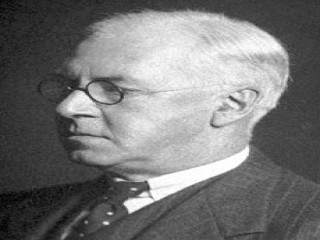
Henry Dale biography
Date of birth : 1875-06-09
Date of death : 1968-07-23
Birthplace : London,England
Nationality : English
Category : Science and Technology
Last modified : 2011-12-21
Credited as : physiologist and pharmacologist, study of acetylcholine, Nobel laureate
0 votes so far
Henry Hallett Dale was born in Islington, London, to Charles James Dale, a pottery manufacturer from Staffordshire, and his wife, Frances Anne Hallett, daughter of a furniture manufacturer. Henry was the third of seven children, one of whom (his younger brother, Benjamin Dale) became an accomplished composer and warden of the Royal Academy of Music.
Henry was educated at the local Tollington Park College and then The Leys School Cambridge (one of the school's houses is named after him) and in 1894 entered Trinity College at Cambridge University, working under the physiologist John Langley. For a few months in 1903 he also studied under Paul Ehrlich in Frankfurt, Germany. Also in 1903, Dale assisted Ernest Starling and William Bayliss in the vivisection of a dog which ultimately lead to the events of the Brown Dog affair.
Dale received his M.D. from Cambridge in 1909. While working at the University College London he met and became friends with Otto Loewi. Dale became the Director of the Department of Biochemistry and Pharmacology at the National Institute for Medical Research in London in 1914. He was knighted in 1932, receiving the Order of Merit in 1944 and the Knight Grand Cross of the Order of the British Empire in 1948. Dale served as President of the Royal Society from 1940 to 1945. He became a Fullerian Professor of Chemistry at the Royal Institution in 1942. During World War II, he served on the Scientific Advisory Panel to the Cabinet.
In 1904, Dale had married his first cousin Ellen Harriet Hallett and had a son and two daughters.
Although Dale and his colleagues first identified acetylcholine in 1914 as a possible neurotransmitter, Loewi showed its importance in the nervous system. The two men shared the 1936 Nobel Prize for Medicine.
During the 1940s Dale was embroiled in the scientific debate over the nature of signaling at the synapse. Dale and others believed that signaling at the synapse was chemical, while John Carew Eccles and others believed that the synapse was electrical. It was later found that most synaptic signalling is chemical, but there are some synapses that are electrical.
Dale also originated the scheme used to differentiate neurons according to what neurotransmitter they release. Thus, neurons releasing norepinephrine (also known as noradrenaline) are called noradrenergic, neurons releasing GABA are GABAergic, and so on. This scheme is related to Dale's principle (sometimes erroneously referred to as Dale's Law).
This principle states that each neuron releases only one type of neurotransmitter. Dale's principle has been shown to be false; since many neurons have been shown to release neuropeptides and amino acids in addition to classical neurotransmitters such as acetylcholine or biogenic amines (Bear, et al. 2001). This finding, that numerous neurotransmtters can be released by the same neuron, is referred to as the "coexistence principle." This phenomenon was most popularized by the Swedish neuroanatomist and neuropharmacologist Tomas Hökfelt, who is considered to be the "Father of the Coexistence Principle."
Author of books:
-Adventures in Physiology with Excursions into Auto Pharmacology (1953, research)
-An Autumn Gleaning (1954, lectures)
















